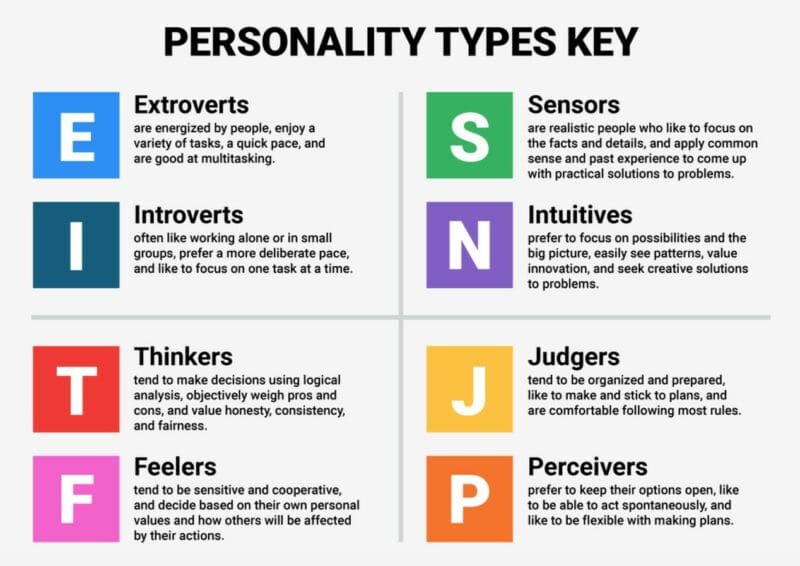In this post
Over the years, much has been made about how personality can be measured, as it has proven very difficult to ascertain what it actually is through a single definition. However, currently two main types of measurement are used, which are:
- Personality scales
- Personality types.
Personality scales
When someone tries to ascertain their personality using a scale, rather than being labelled as a particular ‘type’, they will find that they are more like one thing on a bi-polar scale than the other. For example, if we consider the following opposites:
Generous (1) – mean (10)
Anxious (1) – relaxed (10)
Adventurous (1) – timid (10)
Dominant (1) – submissive (10)
Most people would be able to confidently rate themselves between the two opposites, on a scale of 1-10, so they are not saying that they are either definitely generous or definitely mean but they are more one than the other. Similarly, someone may decide that they are in the middle of the scale, indicating that they see themselves as neither in particular, but that they may in fact be both mean and generous, depending on the situation, or that they simply do not see themselves as either of those things.
This method of measuring personality enables people to explore who they are without giving themselves a definitive label, which is what the personality types method of measuring concludes about someone.
Personality types
Unlike personality scales testing, if someone takes a personality types test, they will come out with a definite indicator of what sort of person they are, as they will have particular ‘traits’ attached to them.
Eysenck is very famous within this area of research and his work was considered more fully in the ‘criminal behaviour’ unit of this course. However, let’s remind ourselves of what the trait theory actually is.
Eysenck was concerned with how people could be grouped together and compared with one another and he was significantly involved in the development of psychometric tests, which are used to measure psychological characteristics.
Eysenck adopted the approach of sampling different bits of a person’s behaviour by asking them questions about the way they normally behaved. His tests were developed as questionnaires, and by analysing their findings he was able to develop his own theory of personality.
Eysenck used a technique known as factor analysis to try and identify basic aspects of personality and concluded that there seem to be three major traits of personality which accounted for the many different types of people we encounter – extroversion, introversion and neuroticism. He later added a fourth dimension of psychoticism as he felt this was not accounted for in his original model.
Some examples of traits associated with extroversion include:
- Sociable
- Outgoing
- Talkative.
Examples of traits associated with introversion include:
- Passive
- Careful
- Thoughtful.
Examples of traits associated with psychoticism include
- Hostile
- Impulsive
- Sensation-seeking.
According to the ‘types’ way of measuring personality, people can have different levels of each, so they could be high neurotic and low introvert, for example. This does still, however, label people in certain ways, unlike the scales measurement, which is not quite so definitive.
The Myers Briggs Type Indicator
In 1956, Myers and Briggs came up with a test of personality based around Jung’s idea that everyone’s view of the word is unique. Jung had suggested that there are right personality types and these were combinations of the following:
- Extraversion
- Introversion
- Sensing
- Intuition
- Thinking
- Feeling.
Myers and Briggs turned these into four overall types and labelled them as follows:
- Extravert (E) or
- Introvert (I)
- Sensing (S) or
- Intuition (N)
- Thinking (T) or
- Feeling (F)
- Judging (J) or
- Perceiving (P).
People are a combination of four of these factors, so you might be an ESTJ or an INTP for example. Myers and Briggs wanted people to see that everyone was unique but that people could work on their differences and have satisfying relationships with others.




